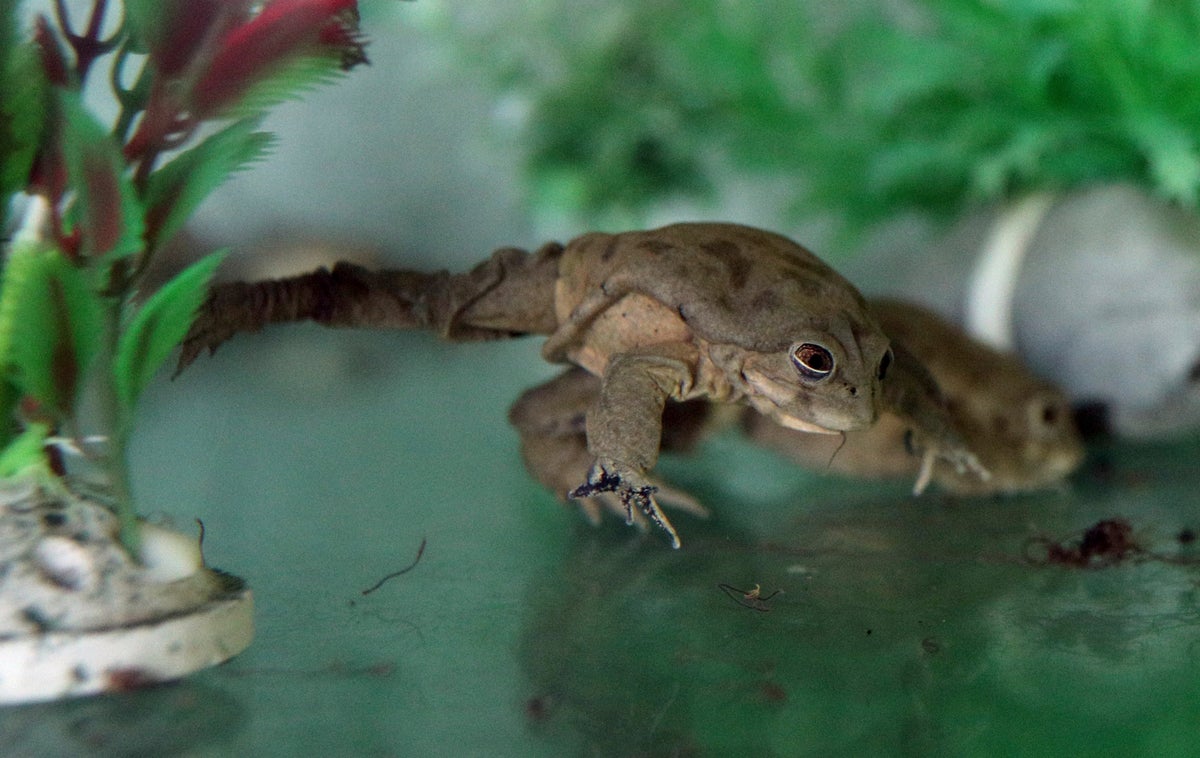
Climate change is worsening the planet's biodiversity crises, making environments more deadly for thousands of species and accelerating the precipitous decline in the number of plants and animals on Earth, according to an international organization that tracks species health.
Species of salmon and turtles are among those facing a decline as the planet warms.
Atlantic salmon isn’t yet threatened with extinction, but its population dropped by nearly a quarter from 2006 to 2020, the International Union for Conservation of Nature, which tracks biodiversity around the globe, said on Monday. It’s now considered near threatened. They live in fewer places and face human-created hazards like dams and water pollution. Climate change is making it harder for the fish to find food and easier for alien species to compete, according to the group. Although there are some signs of hope: their numbers ticked up in Maine this past year.
The news was announced at the United Nations climate conference in the United Arab Emirates on Monday. Leaders of the IUCN updated their Red List of Threatened Species, a tracker of biodiversity around the globe. It was mainly bad news. The list includes information on 157,000 species, about 7,000 more than last year's update.
The IUCN said just over 44,000 species are threatened with extinction. That's roughly 2,000 more than last year.
“Species around the world are under huge pressure. So no matter where you look, the numbers of threatened species are rising,” said Craig Hilton-Taylor, head of the Red List unit at the IUCN.
Climate change is worsening conditions for about 6,700 species threatened with extinction.
The Central South Pacific and East Pacific green turtle is at greater risk because of climate change, for example. Fewer turtles hatch as higher seas inundate nests. Warming waters can harm its food supply of seagrasses.
The update includes the first broad assessment of the health of freshwater fish species. One-quarter of species — just over 3,000 — face an extinction risk. As climate change raises sea levels, salt water is traveling further up rivers, for example. And these species already face tremendous threats from pollution and overfishing, the IUCN said.
Frogs, salamanders and other amphibians are suffering the most. About 41% of these species are under threat.
“They are climate captives because of higher temperatures, drought — whatever happens amphibians cannot move out of harm's way and are directly impacted by climate change,” said Vivek Menon, deputy chair of the IUCN's species survival commission.
There was a bit of good news. Two antelope species are fairing better, although they still have a long way to go before their long-term survival is stabilized. For example, the scimitar-horned oryx, a light-colored animal with curved horns, had previously been categorized as extinct in the wild but is now endangered. It faced a lot of threats: poaching, drought and car accidents all played a role in largely eliminating the species by the turn of the century. But recent efforts to reintroduce the species in Chad have helped and there are now at least 140 adults and more than twice as many calves on a large nature reserve.
IUCN's director general Grethel Aguilar said it's clear humans need to act to protect biodiversity and when conservation is done right, it works. To combat the threat posed by climate change, she said fossil fuels need to be phased out, a contentious focus of this year's COP28 negotiations.
“Nature is here to help us, so let us help it back," she said.







